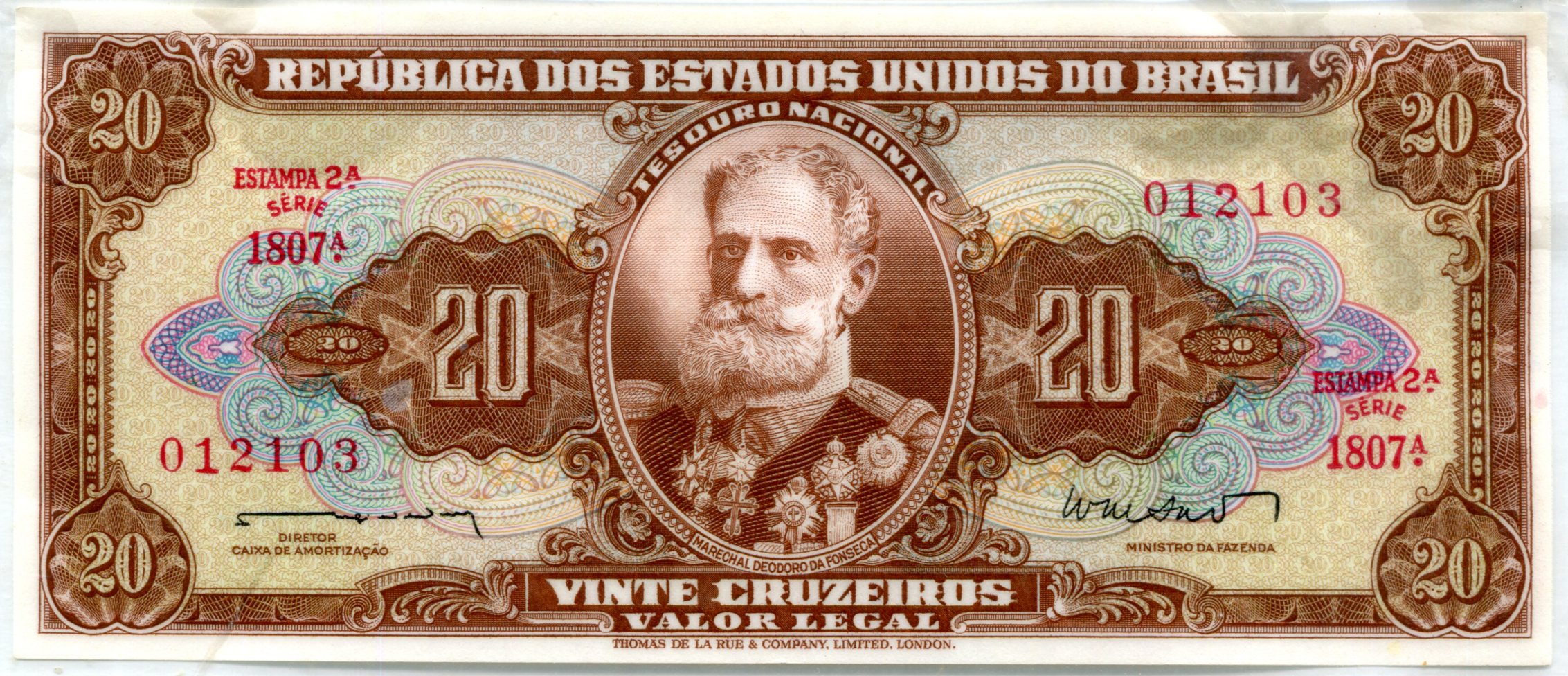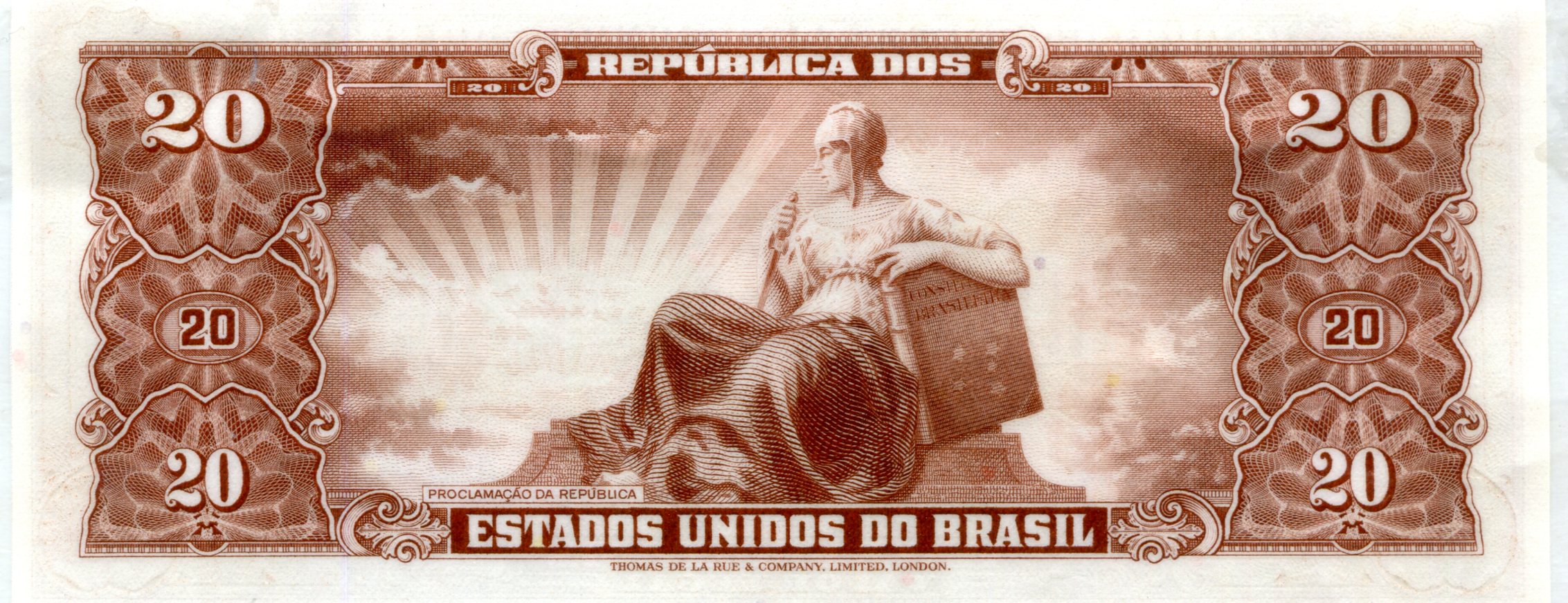This note is worth a little as a collectable. At least, I’ve seen one like it for sale online for about 5 euros.
 It’s a 1962 series 20 cruzeiros banknote from Brazil. I don’t remember where I got it, but I doubt I paid anything close to that much. The note is demonetized, long since replaced by the Brazilian real. A large selection of Brazilian currency can be seen here.
It’s a 1962 series 20 cruzeiros banknote from Brazil. I don’t remember where I got it, but I doubt I paid anything close to that much. The note is demonetized, long since replaced by the Brazilian real. A large selection of Brazilian currency can be seen here.
Apparently the name literally means “large cross” in Portuguese. Referring to my old friend, the Southern Cross.
Crux appears on the Brazilian flag, of course — it’s no monopoly of Australia or New Zealand (or Papua New Guinea or Samoa) — but it occurred to me I didn’t know much about the other stars on the flag. Turns out the number of stars is the same as the number of Brazilian states, same idea as with the Stars and Stripes. Stars are likewise added when states are created, and that’s happened as recently as 1992.
But unlike the U.S. flag, the Brazilian stars are arrayed in constellations you’d see in the southern skies. Also, Wiki makes this claim: “According to Brazil’s national act number 5,700 of 1 September 1971, the flag portrays the stars as they would be seen by an imaginary observer an infinite distance above Rio de Janeiro standing outside the firmament in which the stars are meant to be placed (i.e., as found on a celestial globe).”
Depicted on the note is Manoel Deodoro da Fonseca, the impressively whiskered leader, or maybe the figurehead, of the coup that deposed Emperor Dom Pedro II and ended the Empire of Brazil, becoming the first president of the Republic of the United States of Brazil.
Too bad about that, I always thought. It was a constitutional monarchy, after all, and could still be. The Americas could use at least one besides those technically British still. That might also have prevented some of the 20th-century political mischief in Brazil, who knows.
Be that as it may, this is the reverse, with a personification of Brazil proclaiming the republic, based on the painting “Proclamação da República” by painting by fluminense artist Cadmo Fausto de Souza (1901-83).
 The note is another of the prodigious and expert output of Thomas De La Rue & Co. Ltd., London. The company’s still around, known as DeLaRue plc., and still designs banknotes, and a lot else besides.
The note is another of the prodigious and expert output of Thomas De La Rue & Co. Ltd., London. The company’s still around, known as DeLaRue plc., and still designs banknotes, and a lot else besides.